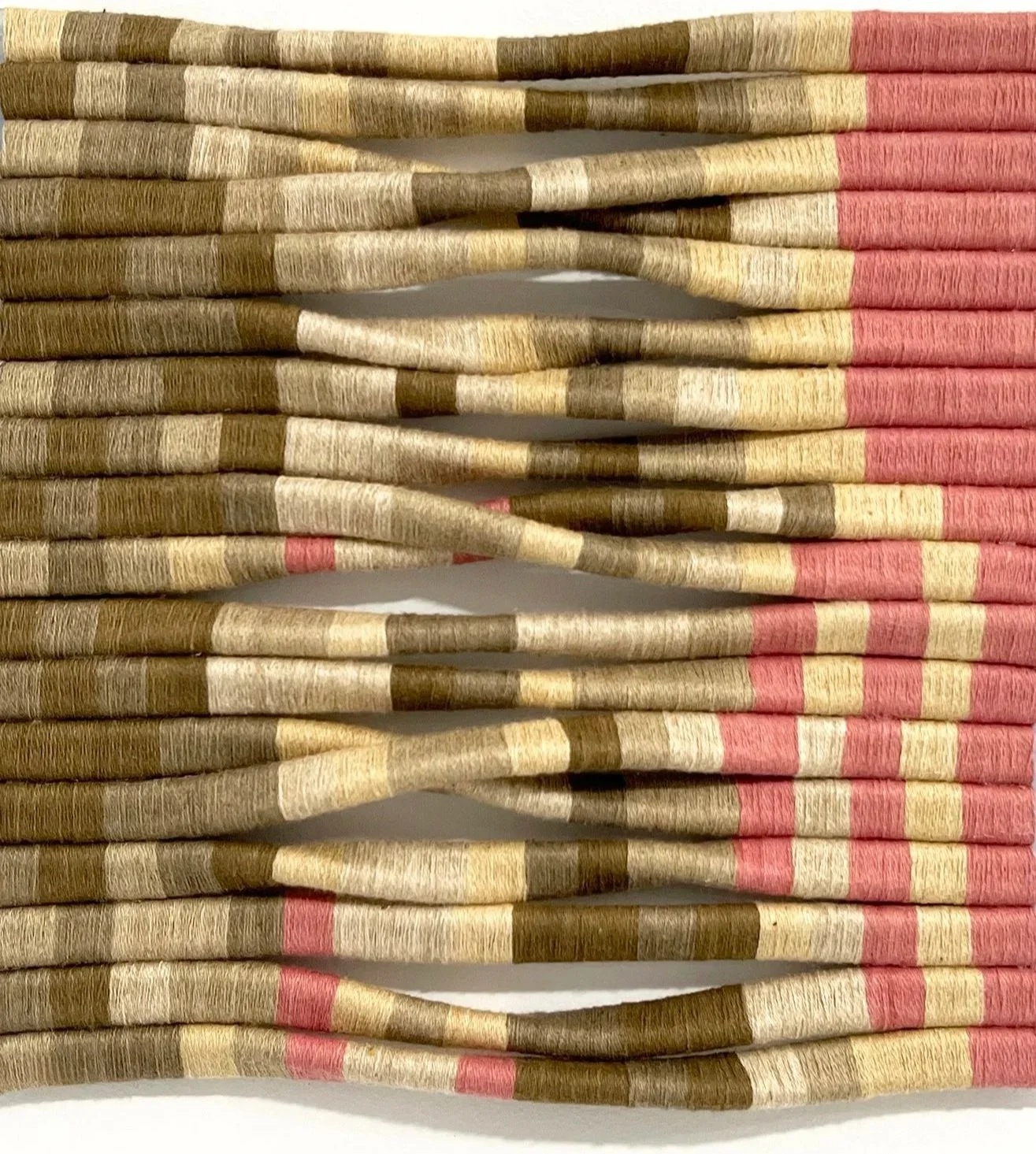Enmeshed-Endangered-Encoded
Marian Gallery, Mount Mary University, Milwaukee, WI, August 25-October 9
Lecture, October 9 in Helfaer Hall at 5 pm, followed by a closing reception in the gallery 6-7 pm
This exhibition brings together three bodies of work responding to the increasing threats to climate knowledge, bodies, and ecosystems by leaders prioritizing extraction over all else. Weinberg uses intimate hand processes to combine data, found text, thread, discarded paper, and medical waste into a feminist material archive that attends to the inextricability of ecological and human health. Drawing on histories and mythologies of textiles as subversive language, this archive harbors vulnerable sources of knowledge while weaving counter-narratives to patriarchal and colonial ways of knowing. Tree rings coiled from expired tourniquets are presented as texts on missed opportunities for care, rather than the records of ecological histories they usually embody. Woven and sculpted abstract landscapes encode a vital resource: climate data from the National Oceanic and Atmospheric Administration. Now, though, the social-political dimensions of the climate crisis and a sense of place are reinserted into the story the data tells. In the final series, tactile color fields are embedded with news from The New York Times Magazine. Shredded, spun, woven, and paired with poetic text fragments, the remade pages offer space to reflect on loss while refusing despair. Embodying the enmeshment of today's climate, health, and social crises, together these projects comprise an archive of endangered sources of knowledge encoded in material and color.
